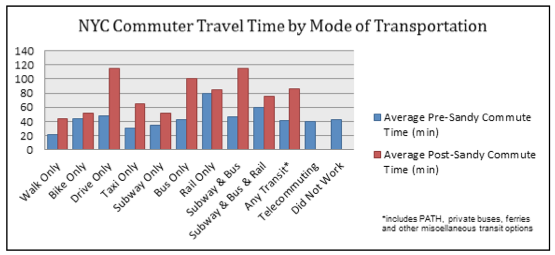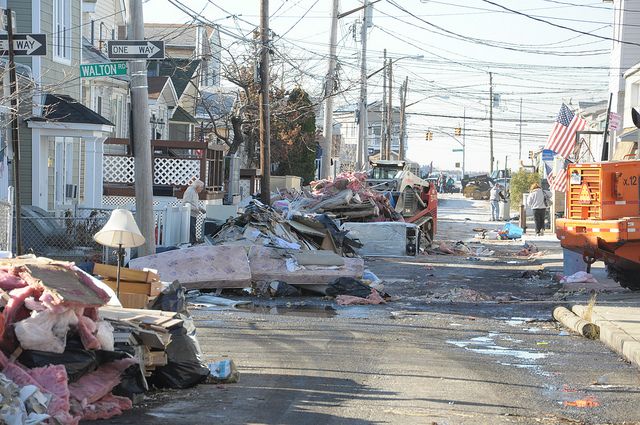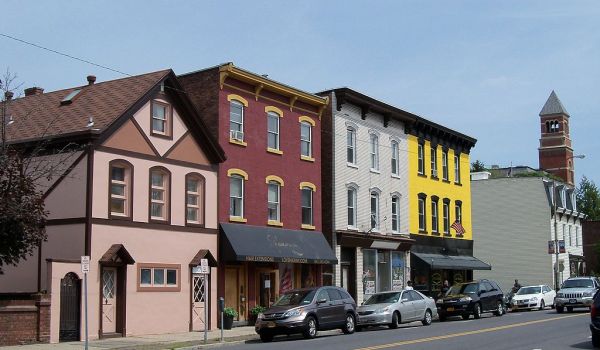After Hurricane Sandy tore through the Northeast in December, killing 159 and causing $65 billion in damages, national attention focused on not only rebuilding devastated communities but also fortifying the coasts against future storms. “Resiliency” became a common buzzword, city governments launched special initiatives, and design competitions put on the table all kinds of ideas for the future.
Now, a White House-created task force has come out with a strategy for better preparing cities across the country for increasingly common extreme weather events. The Hurricane Sandy Rebuilding Task Force, led by Housing and Urban Development Secretary Shaun Donovan, today released 69 policy recommendations that aim to streamline funding, give residents faster access to federal assistance, and develop regional approaches to disaster prep and response.
The 200-page document makes for some seriously wonky reading. Here are a few highlights from the Hurricane Sandy Rebuilding Strategy:
- Extend the Flood Risk Reduction Standard to all federally funded projects. Back in April, HUD announced that Sandy-related rebuilding projects had to account for a given risk of flooding in order to receive federal money. In his Climate Action Plan, President Obama called for applying this standard nationwide. The task force echoes Obama, suggesting that subsidized projects use regional data to determine the flood risk in their area and address it accordingly.
- Expedite flow of Sandy transportation funding to needed repairs. As the Rebuilding Strategy details, “Hurricane Sandy was the worst disaster for public transit systems… in the nation’s history.” The chart below shows how severely commute times worsened in the aftermath of the storm:

Getting transportation systems back up and running is perhaps one of the most urgent needs for a city following a crippling storm. (Just ask Joe Lhota, the former MTA chairman who became something of a local hero for restoring subway service so quickly.) Billion of dollars from FEMA, the FTA and the FAA went into repairing metro and intercity transportation in the Northeast following Sandy.
- Make data about natural disasters and disaster-affected areas available to the public. “One of the most critical things we heard is that communities need clear and accessible information about floods and flood risks,” Donovan said during a telephone press conference about the Rebuilding Strategy. The task force recommends that local agencies work with HUD, FEMA and the Small Business Administration to gather useful information at a central hub online and make it readily accessible and sharable.
- Make resilience planning a regional effort. Folks at the Brookings Institution should like this one: Rather than let cities and towns fend for themselves, the task force hopes that local, state and federal officials can work together to determine regional infrastructure needs when facing storms and other natural disasters. As an example it points to how New York City, the state, FEMA and other departments are doing ongoing work on flood protection for Manhattan’s East Side.
The task force, which Donovan mentioned would dissolve in about six weeks, will provide initial guidance to communities that wish to adopt its recommendations. (Many have already been put in place.) After that, Donovan said he will meet with Obama’s cabinet every quarter to keep tabs on how the guidelines are playing out.


_600_350_80_s_c1.jpg)













